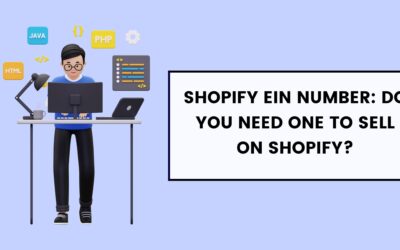Unpacking the World of Prebuilt Dropshipping Stores: Top Picks & Tips
Can you recall the thrill of unboxing a new toy, gadget, or even a piece of furniture? Remember that sense of wonder and anticipation as you pulled out a fully assembled, ready-to-use item, saving you hours of fumbling through instruction manuals? 🎁
Welcome to the e-commerce equivalent: prebuilt dropshipping stores.
Just like that ready-assembled toy, these stores can save budding entrepreneurs countless hours, tears, and, crucially, errors. In our rapidly evolving digital age, the art of e-commerce is no longer reserved for the tech-savvy elite.
I’ve spent years assisting bright-eyed entrepreneurs in launching their dreams on platforms ranging from Amazon and eBay to Shopify. From my experience, one thing remains consistent: the early stages can be the most challenging.
Now with prebuilt options, even those fresh to the game can dive into the pool of online business opportunities fast.
Let’s unpack this treasure box and explore what’s inside.
Types of Prebuilt Stores
Imagine you’re browsing a car dealership. Some cars are shiny, brand-new models, waiting for their first drive. Others are ‘turnkey’ options — they’re not new, but they’re in top shape, well-maintained, and ready to go. Then there are those that are already out there, cruising the roads, gathering miles and experiences, but now up for a new owner. 🚗
Similarly, in the world of e-commerce, especially dropshipping, we have different “models” of prebuilt stores. Let’s dive into these categories:
Brand-New Premade Dropshipping Store:
- What is it? These are spanking new stores, freshly designed, with no sales or traffic history. They’re essentially blank canvases, but with all the essential features set up. Think of them as the untouched, off-the-ramp vehicles waiting for their first drive.
- Why choose this? Perfect for those who want to build their brand from scratch but don’t want to deal with the technical setup. You get the advantage of a clean slate but skip the hassle of building from the ground up.
Turnkey Dropshipping Store:
- What is it? A turnkey store is like a refurbished item — not brand new, but revamped, polished, and optimized to look and function as if it were. It might have been previously owned, but it’s been enhanced to ensure it’s in top-notch condition.
- Why choose this? Ideal for those looking to jumpstart their business with a store that has been tried and tested but is now revamped for a fresh start. It offers a balance between starting anew and leveraging existing frameworks.
Already-Running Premade Dropshipping Stores:
- What is it? These are the veterans. They have been out there, seen the world of e-commerce, made sales, and perhaps even built a customer base. Buying an already-running store means you’re stepping into an established business.
- Why choose this? This option is for entrepreneurs who want to skip the early growth stages and jump into managing and scaling. You inherit the store’s history, customer reviews, and challenges. It’s like buying a famous eatery in town: you get the clientele, the reputation, and any past critiques.
The key is to choose based on your comfort, business goals, and how hands-on you want to be in the initial stages.
Remember, no matter which type you go for, success in dropshipping, much like driving, is not just about the vehicle but also the driver’s passion, dedication, and skills.
The Appeal of Prebuilt Dropshipping Stores
Ahoy, future e-commerce captains! 🛳️ Let’s set sail into the vast ocean of dropshipping. But wait, you’re probably wondering: “Why start with a prebuilt ship instead of crafting my own from scratch?” Well, it’s because these ships come with a treasure map! Let me unpack that for you.
Starting Sales Instantly Without the Setup Hassle:
- Instant Sailing: Imagine having a ship that’s already sea-ready. That’s your prebuilt dropshipping store! While others are still hammering in nails and patching sails, you’re already out there, navigating the waves and searching for your treasure (a.k.a. making sales).
- No Technical Nightmares: No need to fret about hosting issues, domain setups, or integrating payment gateways. I remember when I first started – I spent more time trying to fix a minor website bug than selecting products! With a prebuilt store, those digital gremlins are already taken care of.
Bypassing the Learning Curve:
- Avoiding Early Mistakes: Every new venture has its pitfalls. But what if you could leap over some of them? With prebuilt dropshipping stores, you benefit from the wisdom and experience of those who’ve walked (or sailed) the path before. It’s like having an experienced sailor guide you around stormy weather.
- Time Is Gold: Instead of spending weeks or months on understanding the basics, you can focus on advanced strategies, marketing, and scaling your business. Time saved here can be redirected to creating memorable branding or engaging marketing campaigns.
Accessing Ready-Researched Winning Products:
- Treasure Trove of Products: Prebuilt stores often have a curated list of popular items trending in the market. It’s like having a compass that points straight to the treasure. (1)
- Market Insight: These products aren’t just randomly selected. They’re based on market trends, customer reviews, and data analytics. I’ve seen entrepreneurs spend months on product research only to realize the market trend has shifted. With prebuilt stores, you’re always a step ahead.
I still recall my early days when I tried to do everything from scratch. It was rewarding, yes, but oh boy, it was time-consuming!
Seeing the newer entrepreneurs today, with their prebuilt stores, jetting off to success in half the time, it’s evident how the dropshipping landscape has evolved. So, if you’re contemplating whether to go prebuilt or not, just remember: the faster you start, the sooner you’ll reach the treasure. Happy hunting!
Top Providers of Premade Dropshipping
Navigating the waters of dropshipping can be daunting, especially with the myriad of choices for premade stores. As your trusty guide through these seas, I’ve narrowed the choices to two of the most esteemed providers I’ve encountered personally. Let’s hoist the sails and explore them!
Wholesale2b
- 🛍️ Features:
- One-Stop Solution: Wholesale2b offers a comprehensive dropshipping solution with integration to over 100 suppliers. This means a wide array of products at your fingertips.
- Automated Listing: Save yourself the headache of manual product listings. Wholesale2b updates your store automatically when a product is out of stock.
- Order Automation: No more messy order tracking. With Wholesale2b, the orders flow smoothly from your store to suppliers.
- 💲 Pricing:
- Free Plan: Get your feet wet with access to their directory of suppliers.
- Premium Plans: Starting from $29.99/month, unlock the full potential of dropshipping with automated tools, integrations, and much more.
AliDropship
- 🛍️ Features:
- Seamless AliExpress Integration: Directly import products from AliExpress into your store in a flash.
- Custom Store Creation: Want a unique touch? Their team can custom design your store based on your preferences.
- Marketing Tools: From email templates to discount coupons, AliDropship equips you with tools to keep your customers coming back.
- 💲 Pricing:
- AliDropship Plugin: A one-time payment of $89 gives you a powerful tool to integrate AliExpress with your store.
- Custom Stores: Starting from $299, get a personalized dropshipping store crafted to your specifications.
Choosing the right provider is like choosing the perfect ship for your treasure hunt. It’s about what suits your needs, budget, and aspirations. I’ve sailed with all three, and while each has its unique strengths, they all ensure a smooth voyage in the dropshipping sea.
Factors to Consider Before Purchasing
Choosing a prebuilt dropshipping store is like shopping for a new home. There are considerations to weigh before diving in. Whether you’re a novice or an experienced sailor in the dropshipping world, everyone can benefit from some navigational tips. Here are the beacons to guide you:
The Niche and Its Market Demand
- 🧭 Why It Matters: Just like in real estate, location (or in this case, niche) is paramount. The niche you choose determines your target audience.
- 📊 Deep Dive: Before settling, research the demand trends. For instance, I once dabbled in vintage watches. While it sounded fascinating, the market demand was minimal, leading to slow sales.
- 🎯 Tip: Use tools like Google Trends or Keyword Planner to gauge the popularity and demand of your chosen niche.
Amount and Quality of Products Listed
- 🧭 Why It Matters: Quantity gives variety, but quality ensures trust. Your store’s reputation heavily rests on the quality of products you offer.
- 🧐 Inspect Closely: Ensure the store isn’t just stuffed with random products. A well-curated selection is a sign of thoughtfulness.
- 🎯 Tip: Look for reviews or feedback on listed products. High ratings can enhance trust and entice more customers.
Supplier Reliability and Geographical Location
- 🧭 Why It Matters: A reliable supplier ensures smooth sailing, from stock availability to timely deliveries.
- 🌍 Location Counts: While I’ve had success with global suppliers, it’s beneficial to have suppliers closer to your primary market. Faster shipping equals happier customers!
- 🎯 Tip: Engage with the supplier. Test their response time and gauge their expertise. It’s a partnership, after all.
Store Design and User Experience
- 🧭 Why It Matters: A ship can’t sail without a captivating exterior and a functional interior. Similarly, your store’s design attracts customers, and its user experience keeps them aboard.
- 👁️ First Impressions: Navigate the store as a customer. Does it captivate? Is it intuitive? My most successful ventures always had visually appealing and user-friendly interfaces.
- 🎯 Tip: Ensure mobile optimization. Many customers today shop via mobile devices. A responsive design isn’t just good; it’s essential.
Embarking on your dropshipping voyage with a prebuilt store can be a game-changer. However, being armed with the right knowledge ensures you steer clear of icebergs and sail smoothly.
Pros and Cons of Buying an Existing Dropshipping Business
Stepping into the world of ecommerce? Thinking of hopping aboard an already sailing dropshipping ship rather than building your own from scratch? Let’s weigh the anchor and chart the waters of buying an existing dropshipping business. Here’s a balanced look:
Pros
Immediate Market Entry
- 🚀 Leap, Don’t Crawl: Purchasing an existing store propels you straight into the action. While others still select their first products or negotiate with suppliers, you’re already making sales.
- 📈 Proof of Concept: These stores often come with sales data, helping you gauge what works. As I always say, it’s like getting a sneak peek into the future of your venture!
Potential for Pre-existing Customer Base
- 🛍️ Ready-made Audience: Acquiring an established store can mean inheriting its loyal customers, saving you significant marketing efforts.
- 💌 Instant Traffic: Having an existing customer base can mean a steady flow of traffic and potentially quicker sales. I’ve been there, and the thrill of instant traffic beats no other!
Cons
Higher Initial Costs
- 💸 Pay Now, Earn Later: While starting fresh might seem budget-friendly, purchasing an existing store might dig a deeper hole in your pocket initially.
- 🔄 ROI Timing: The investment might be higher, but the returns can be faster if chosen wisely. I once purchased a store that seemed pricey, but it paid off its worth in just a couple of months!
Unknown Store Reputation and Reviews
- 🤷 Mysteries Aboard: You might inherit the store and its past mistakes. Negative reviews or poor reputation can be lingering ghosts.
- 🕵️ Due Diligence: Dig deep into the store’s history before acquiring. As an ecommerce enthusiast, I’ve learned that a store’s past can haunt its future. Ensure you know what you’re stepping into.
Acquiring an existing dropshipping business is akin to buying a home with a history. It can be a mansion of dreams or a house with creaky floorboards. Knowledge is your flashlight, ensuring you see every corner before moving in.
Estimated Costs and Operational Expenses of a Dropshipping Store
Stepping into the lively bazaar of dropshipping? Well, just like setting up a stall in an actual market, there’s rent to pay, goods to buy, and sometimes, unforeseen hiccups to manage. Let’s unpack the costs associated with a dropshipping store so you don’t end up with any unpleasant surprises in your ecommerce journey.
Initial Setup Costs
Domain Name and Hosting:
- Budget Outlay: Approximately $10 to $50 annually for domain; $4 to $25 monthly for hosting.
- Why it Matters: Think of your domain as your store’s address – it’s where customers will find you—and hosting? It’s the physical space where your store is built.
Prebuilt Dropshipping Store (If Purchased):
- Budget Outlay: Varies from $100 to several thousand dollars, depending on store type and reputation.
- The Inside Scoop: My experience? Sometimes, it’s worth paying a bit more for a store with proven sales and a ready customer base.
Premium Themes and Plugins:
- Budget Outlay: Free to $200, depending on quality and functionality.
- Why it Matters: A theme is like your store’s décor and ambiance, while plugins add features to enhance customer experience.
Recurring Operational Costs
App/Plugin Subscription Fees:
- Budget Outlay: $0 to $100 monthly, based on the tools you choose.
- Remember: Tools like email marketing, SEO optimization, and chatbots can automate tasks and boost sales. In my dropshipping journey, the right tools have often been game-changers!
Marketing and Advertising:
- Budget Outlay: This can range anywhere from $5/day to $500/day, depending on the scale and platforms used.
- Why it Matters: No matter how beautiful your store is, without visitors, it’s like a shop hidden in an alley. Through trial and error, I’ve found the right ad spend balance to maximize returns.
Transaction and Payment Gateway Fees:
- Budget Outlay: Typically 2-5% of the transaction value.
- Remember: Every time a sale occurs, payment gateways like PayPal or Stripe take a small cut. Factor this in when pricing your products.
Refunds and Customer Service:
- Budget Outlay: Variable, depending on product type and quality.
- The Inside Scoop: The first time I had to process a large refund, it was a wake-up call. Always account for potential returns in your budget.
Dropshipping might seem like a dreamy low-investment business model. And, in many ways, it is. But remember, every venture has its costs. By anticipating and budgeting for these, you’ll be sailing smoothly on your ecommerce voyage.
Frequently Asked Questions
Are pre-built dropshipping stores worth the investment?
It’s a bit like asking if a ready-made cake is worth buying. A pre-built store can be a godsend for those short on time or lacking expertise. It gives you a head start, often comes with proven sales, and has a ready-to-go structure. However, if you’re someone with a specific vision or tight on budget, building from scratch might be your piece of cake!
How to pick the right type of prebuilt dropshipping store?
The choice boils down to your goals. If you’re a beginner, a brand-new store lets you start fresh, while a turnkey store is all set up, waiting for you to take the reins. For those looking for instant cash flow, already-running stores might be the golden ticket. Think of it like choosing a car: brand-new, second-hand but polished, or a classic with a roaring engine.
What are the Benefits of buying an existing business vs. starting from scratch.
An existing business can offer immediate revenue, a customer base, and tested strategies. But starting fresh? It gives you the thrill of creation and complete control over branding and strategy. Both paths have their adventures; it’s about which journey you’re ready for.
What are the additional costs involved in running a dropshipping store.
Beyond the initial purchase or setup, anticipate costs like hosting, domain, apps, marketing, and transaction fees. Picture it as maintaining a car. The purchase is just the beginning; there’s fuel, servicing, and occasional upgrades. As with any business, plan for both sunny days and rainy ones.
I always recommend giving your new venture at least six months of effort to test the strategy.
Final Opinion
Prebuilt stores can act as your trusty compass, guiding you through the rough terrain of e-commerce without leaving you feeling lost. But remember, the most practical compass is one that’s tailored to your journey, so research is your best ally.
I’ve seen many budding entrepreneurs dive headfirst into the dropshipping pool, and trust me, those who’ve taken the time to dip their toes and feel the temperature (read: do their homework on prebuilt stores) always have a smoother swim. The potential of these stores is immense. From giving you a head start in the race to providing you with a platform that’s already cheered on by an audience, they can be the rocket fuel for your dropshipping spaceship.
But as with any rocket, ensure your vessel is sturdy, your fuel is of top quality, and your destination is clear. Godspeed, entrepreneur!
5 Best Credit Cards for eCommerce: Score Big Savings and Get Rewards
5 Best Credit Cards for eCommerce: Score Big Savings and Get RewardsWhen you're running an...
Do I Need a Business License for Shopify?
Do I Need a Business License for Shopify?Do you need a business license to run a Shopify store? ...
Shopify EIN Number: Do You Need One to Sell on Shopify?
Shopify EIN Number: Do You Need One to Sell on Shopify?An Employer Identification Number (EIN) is...








